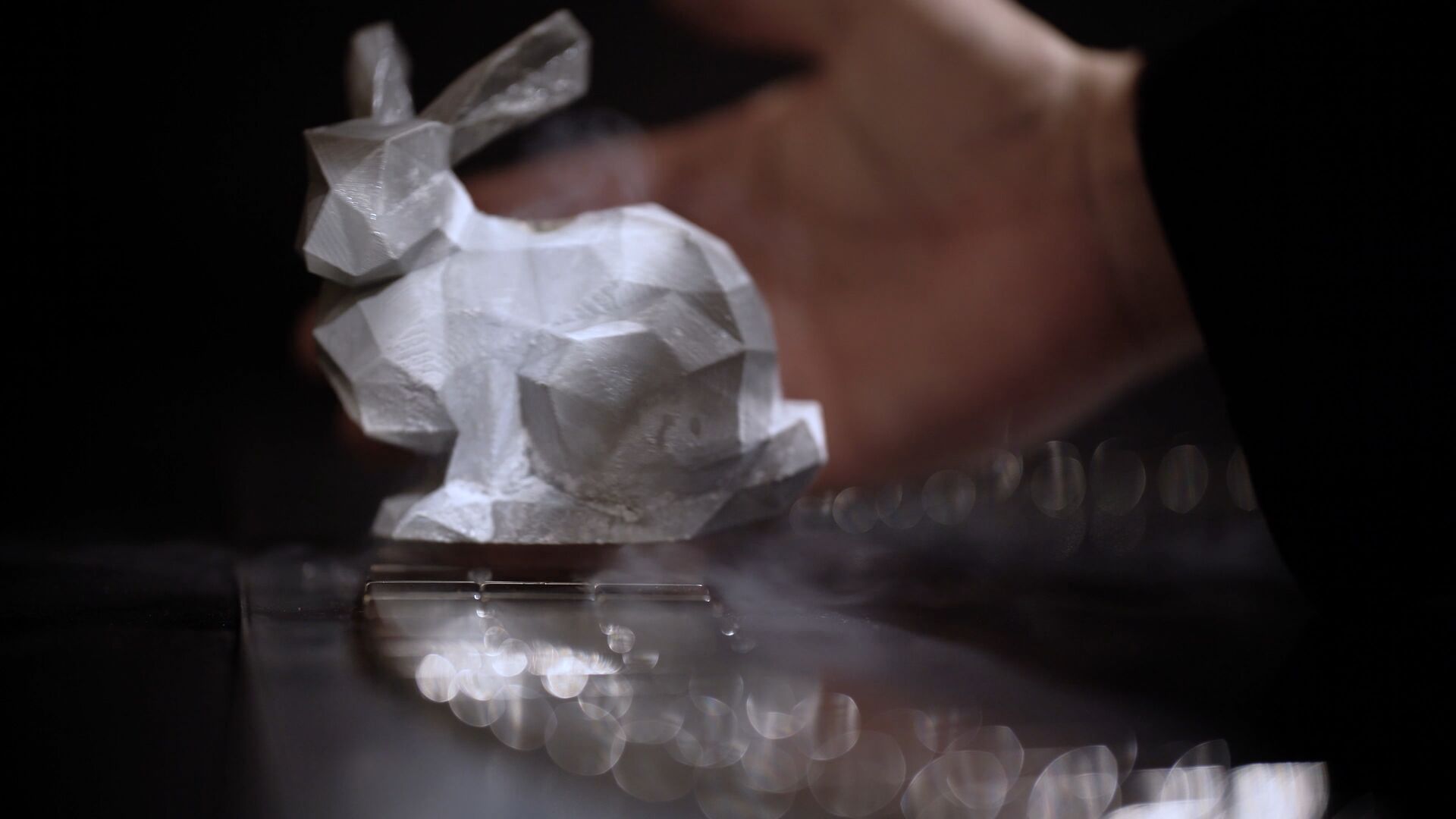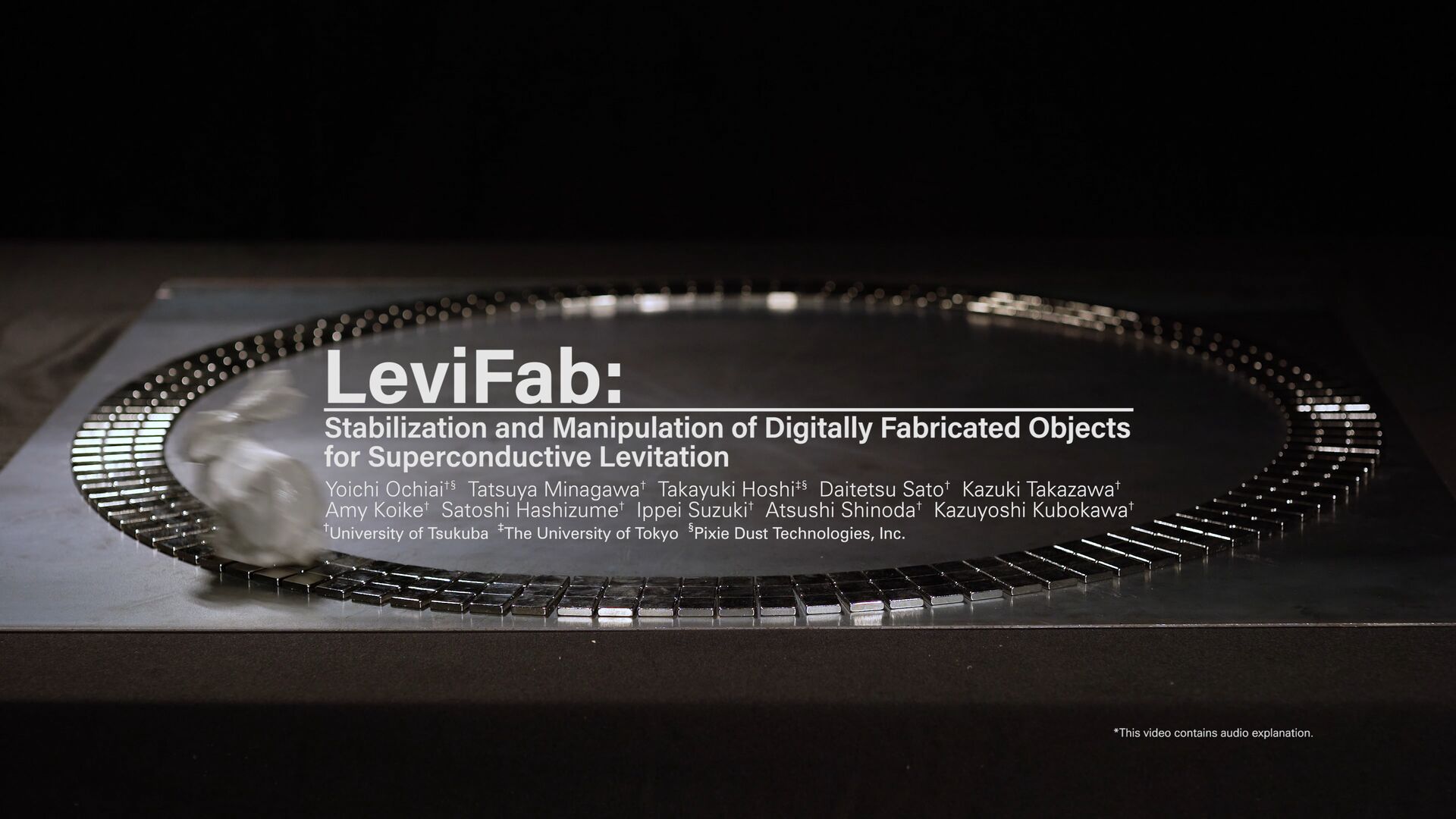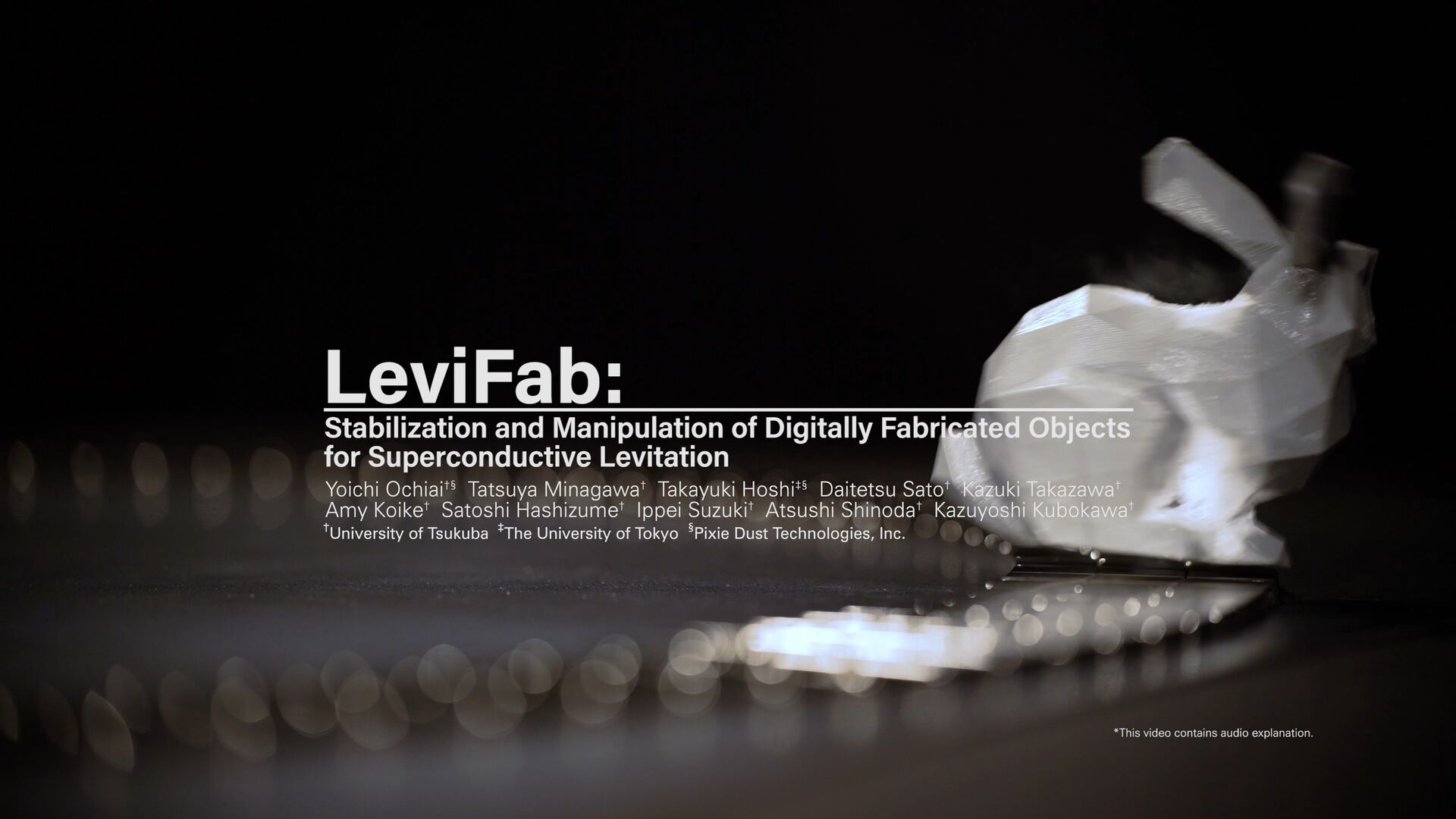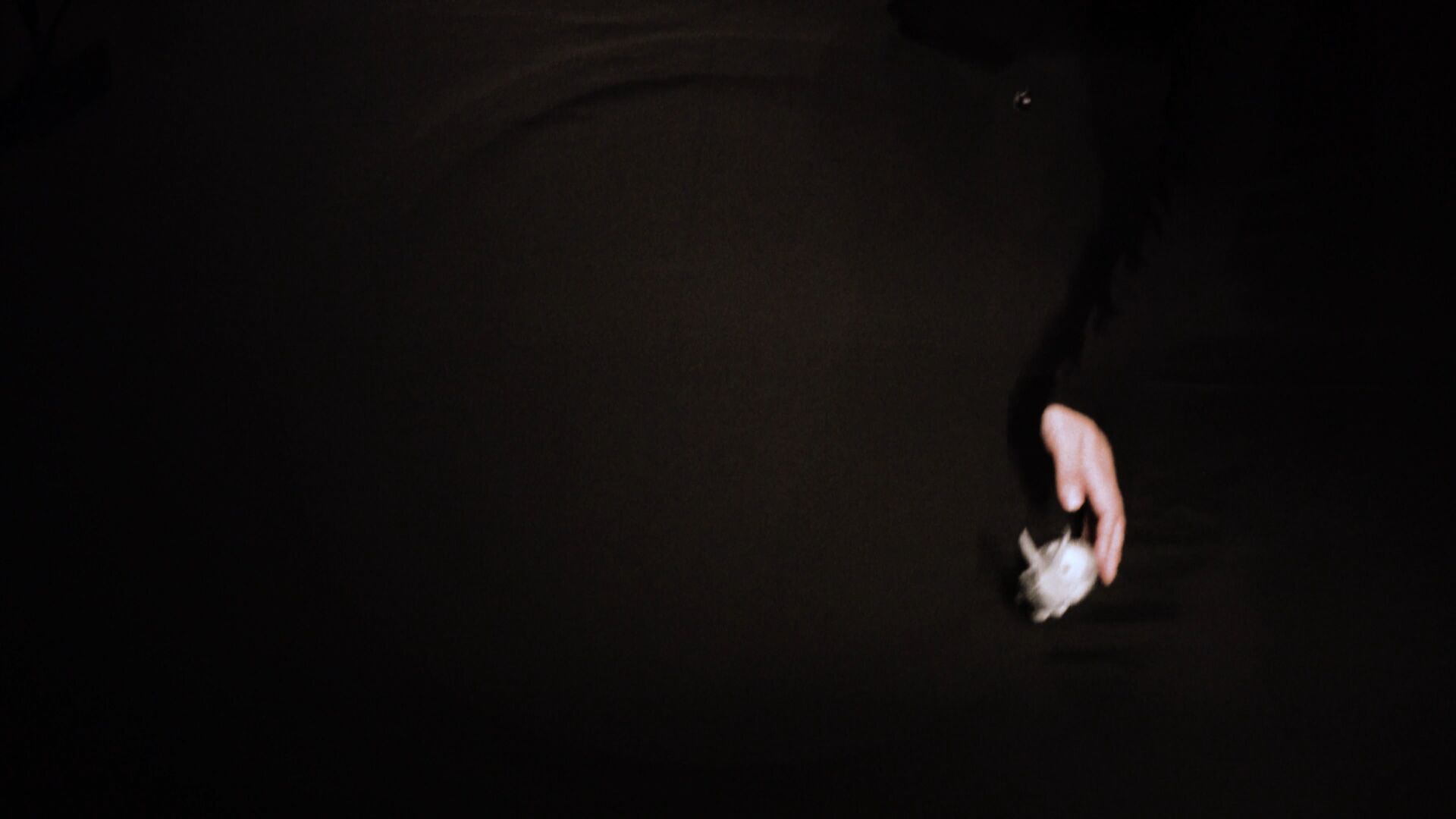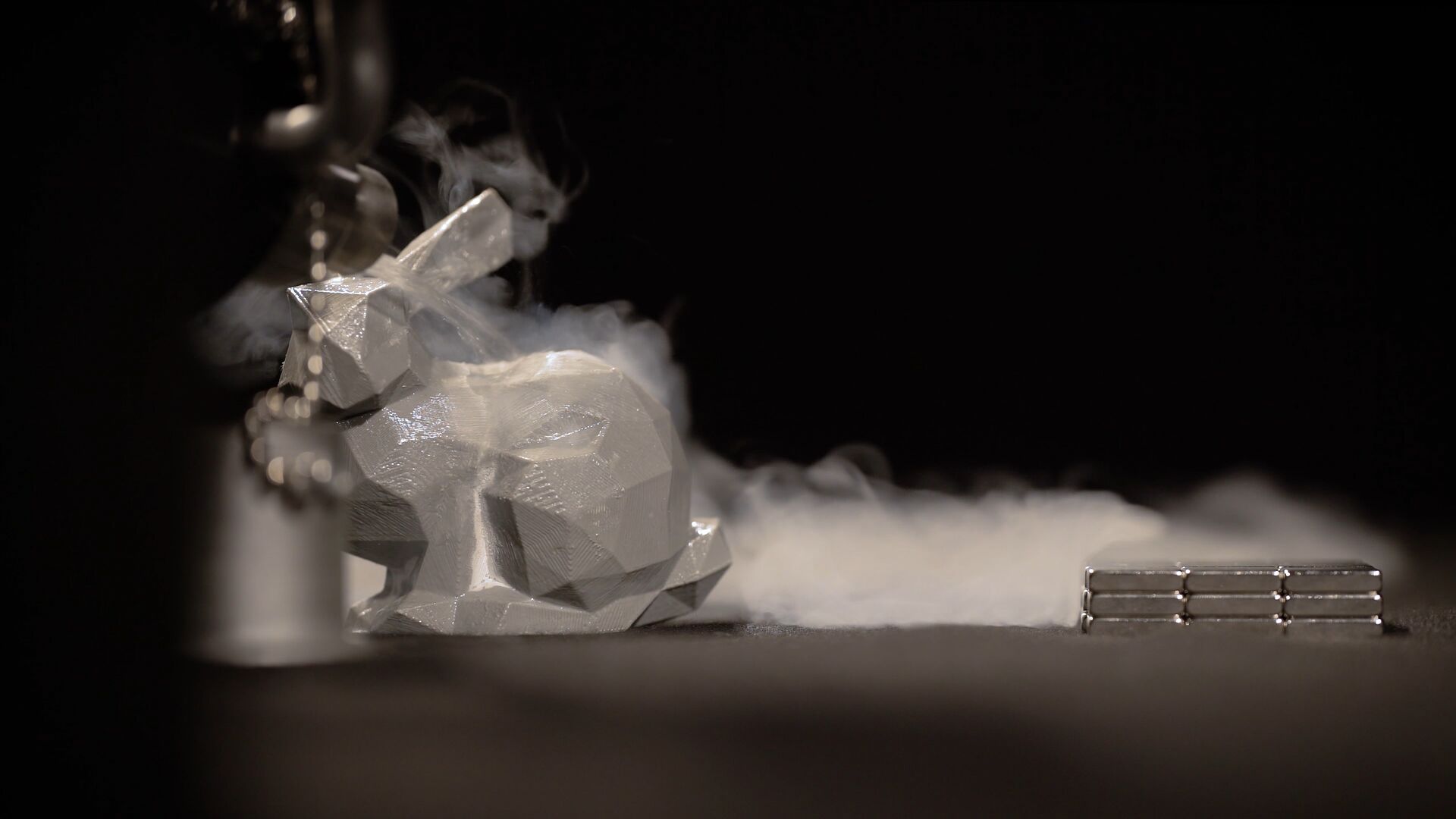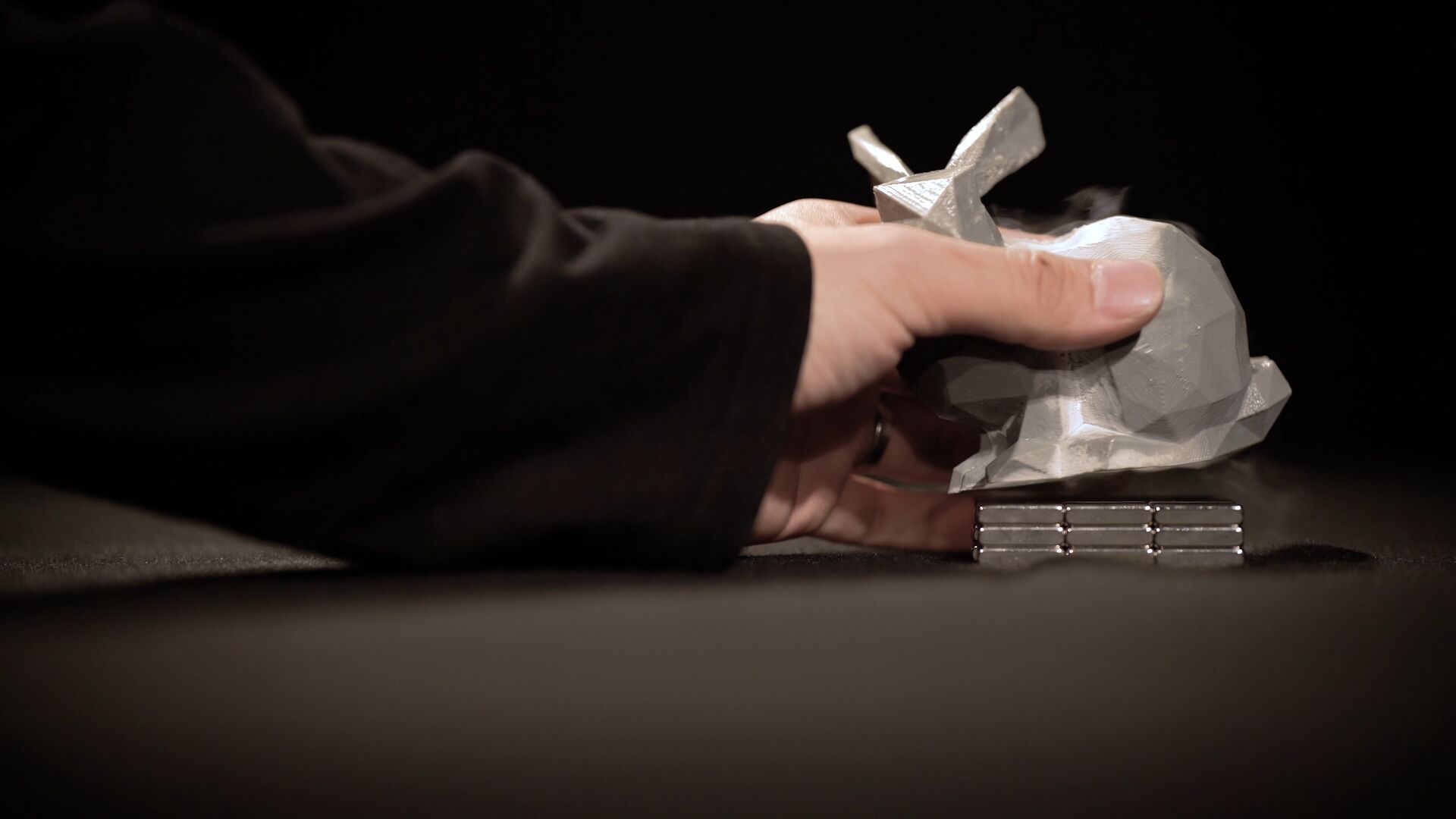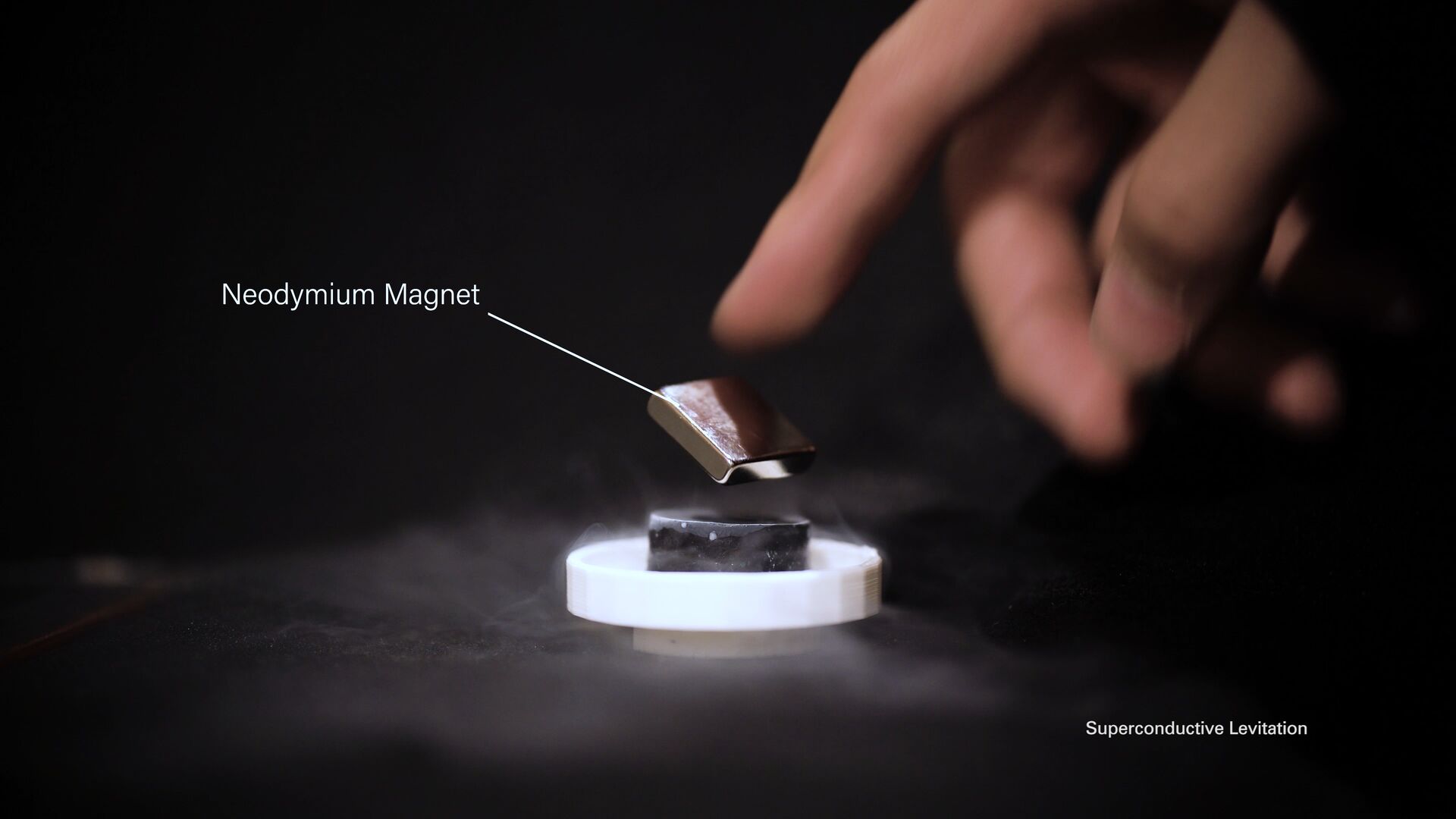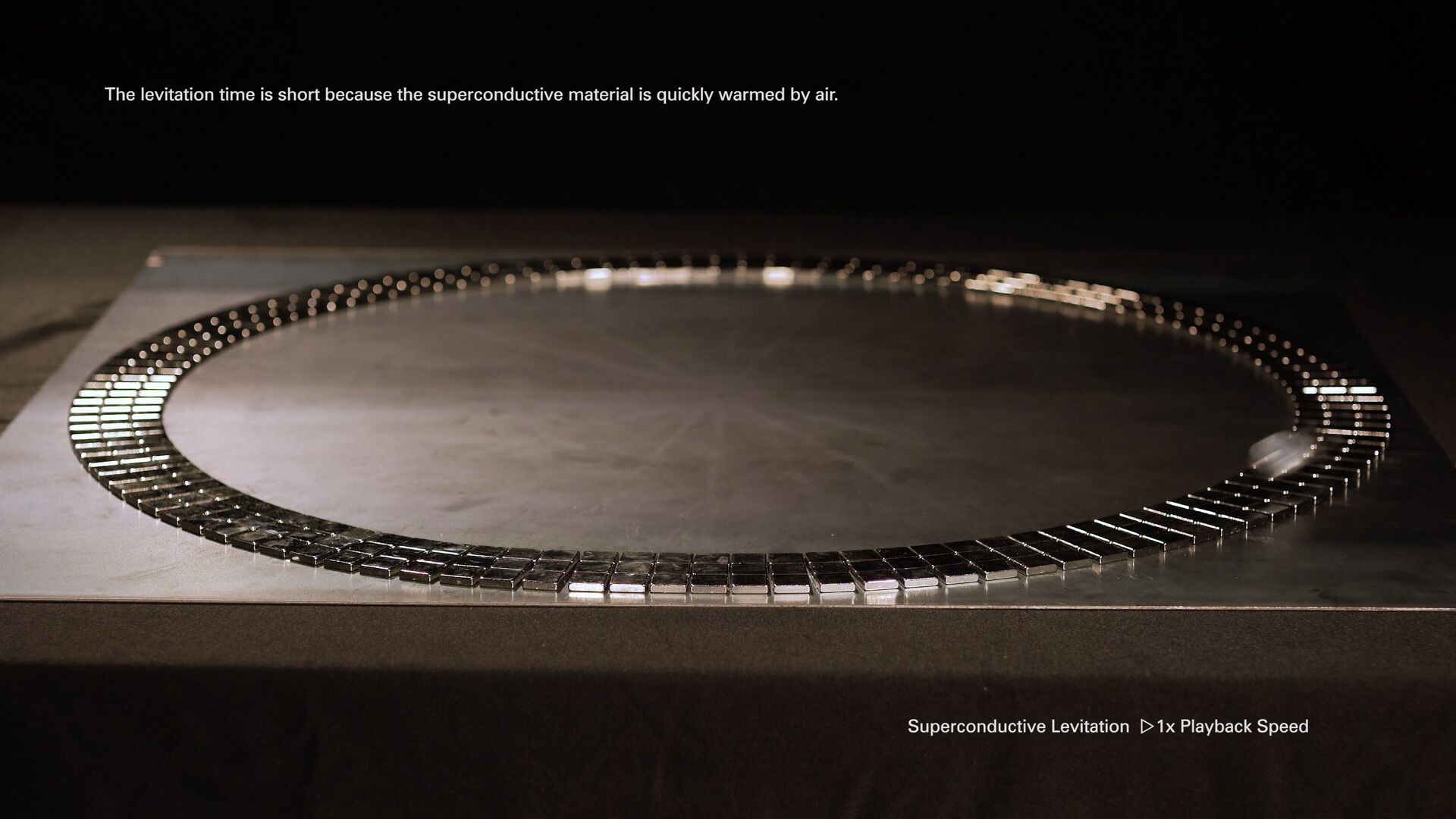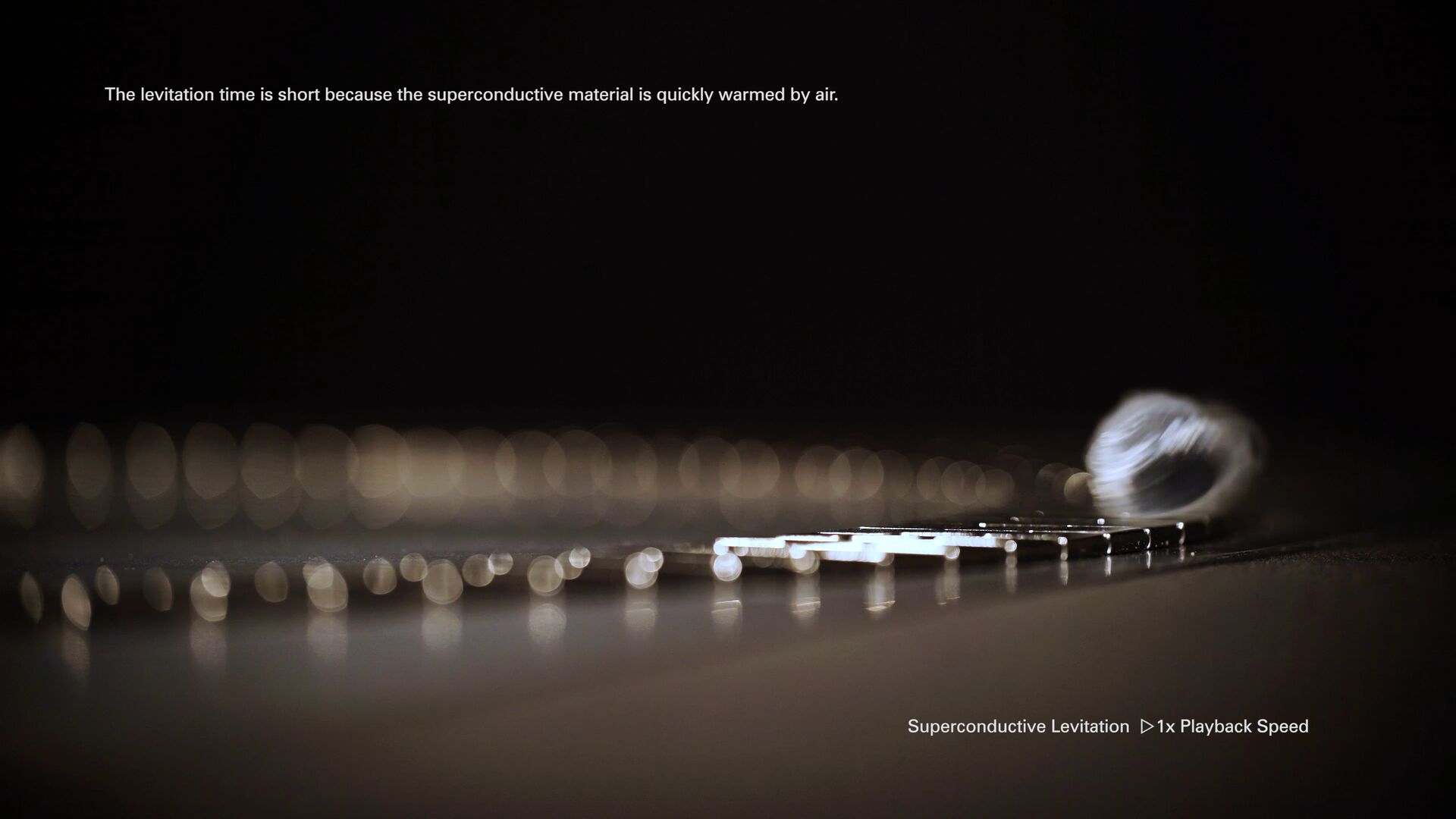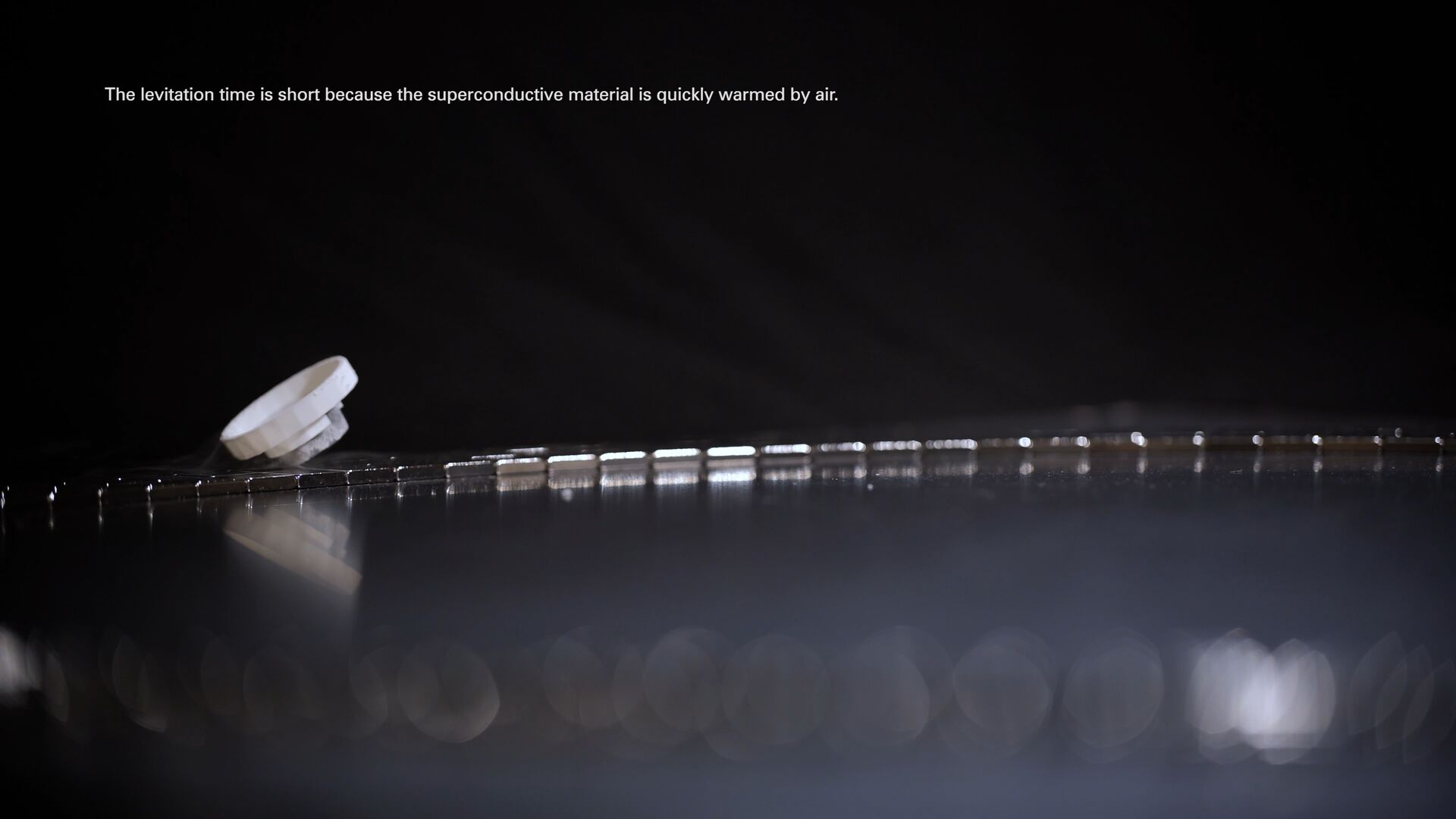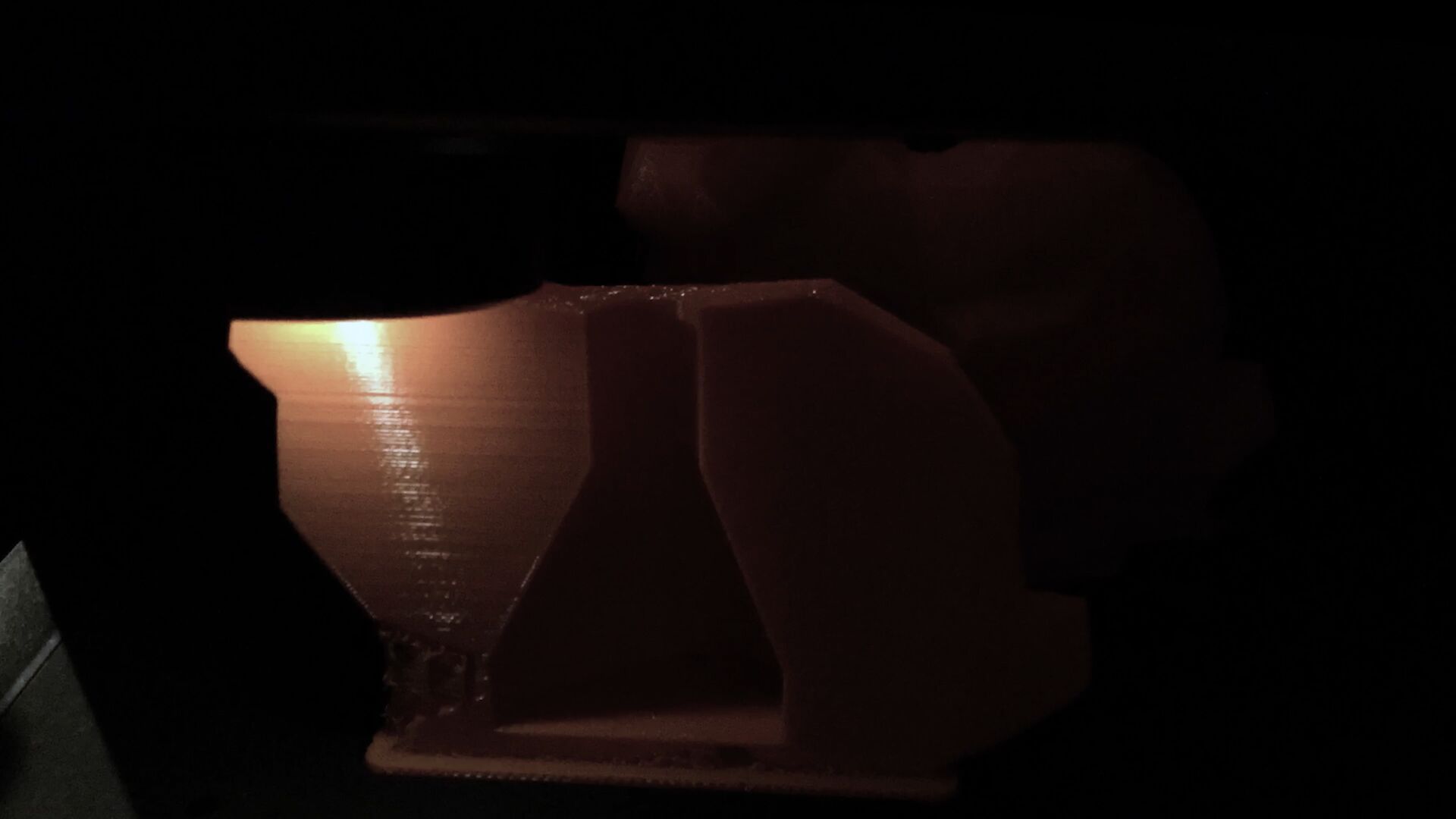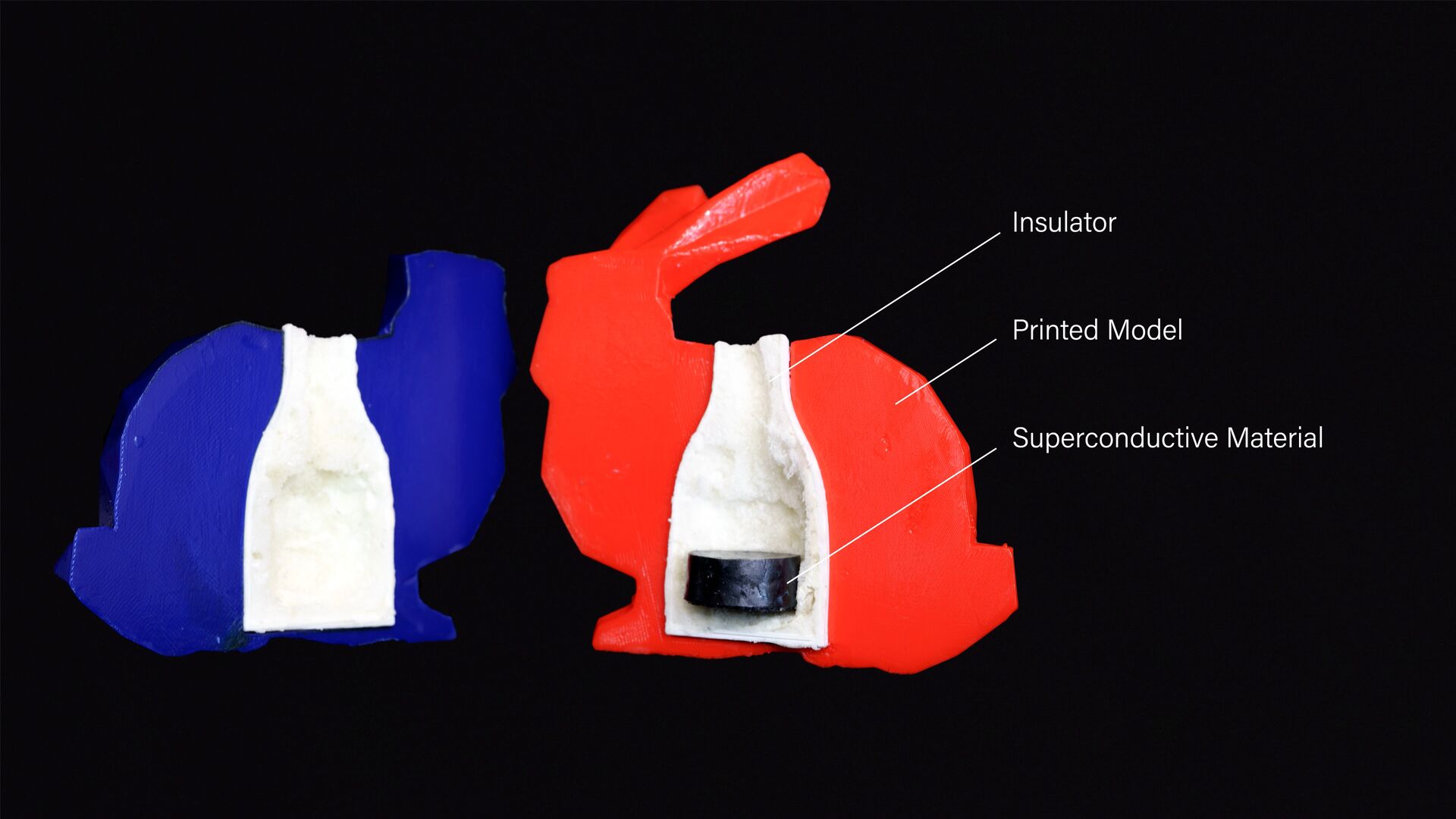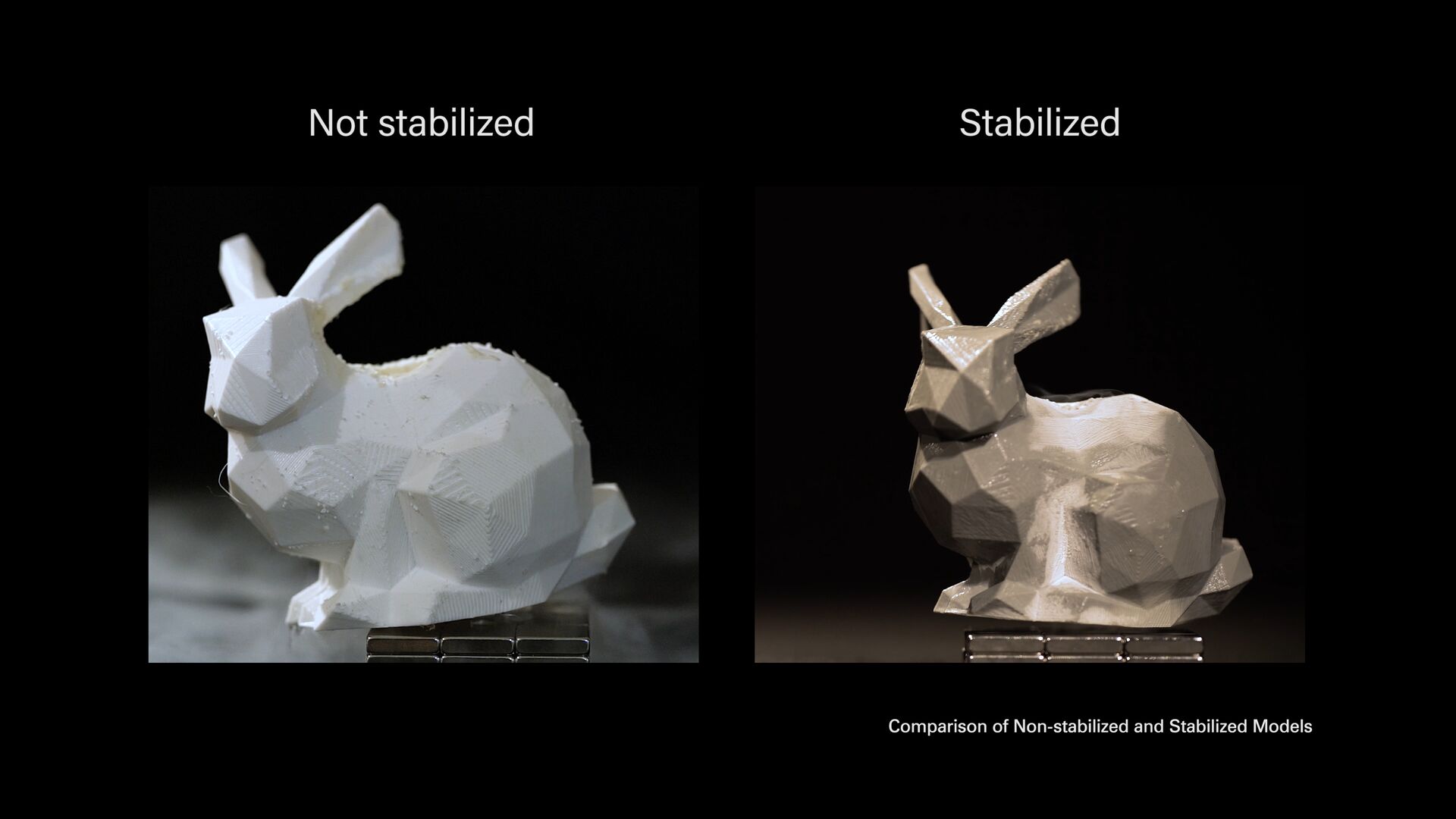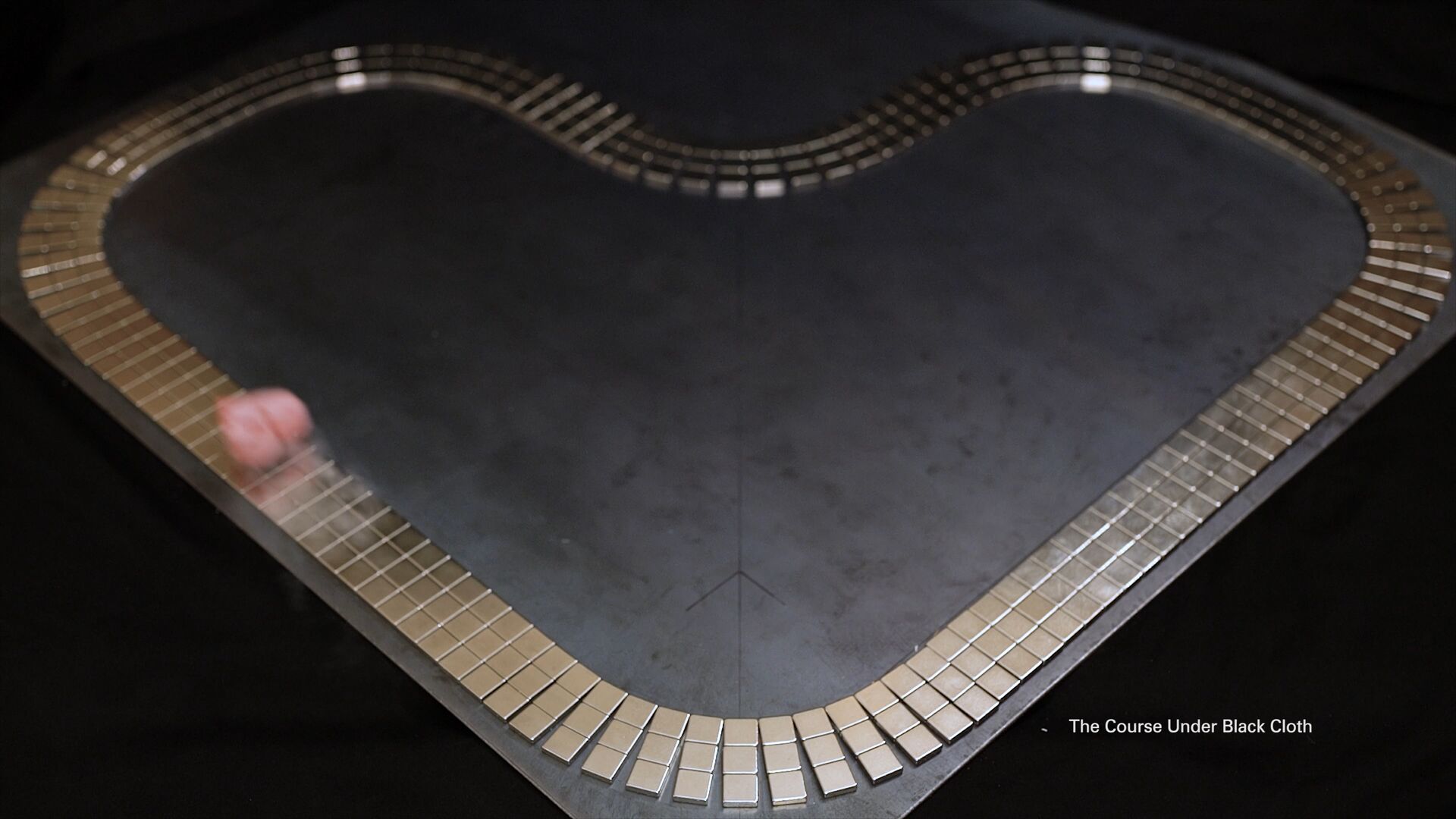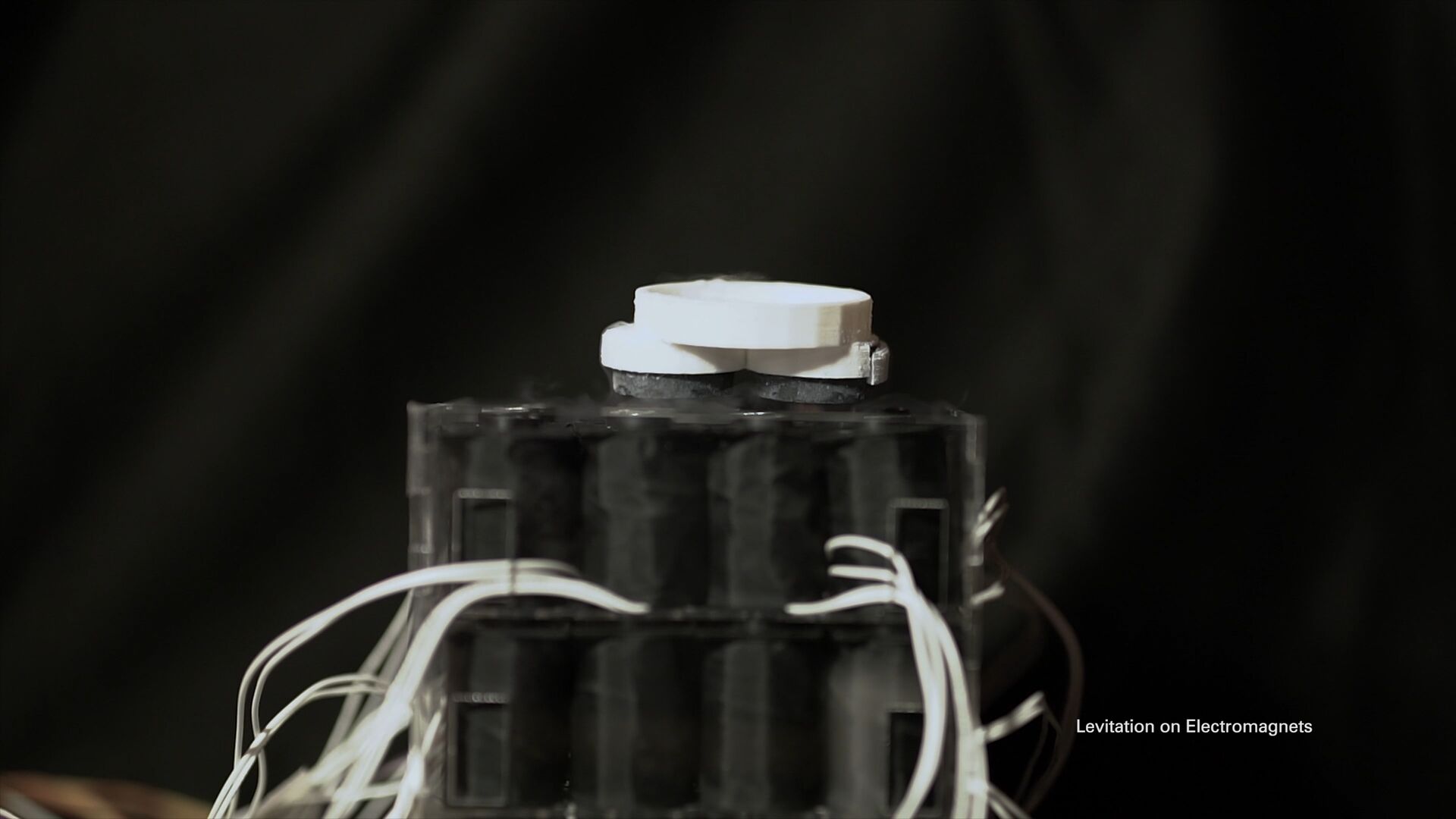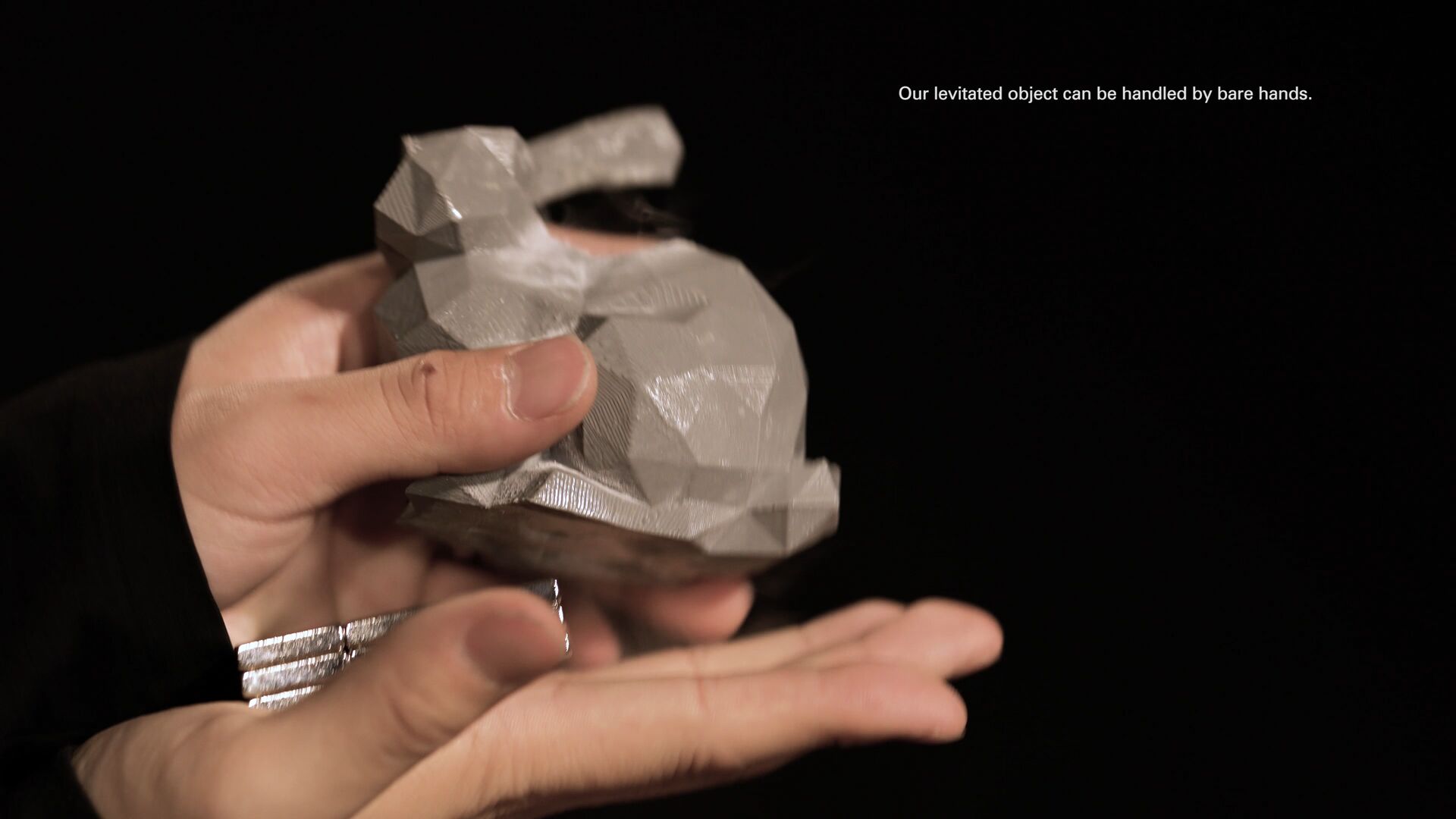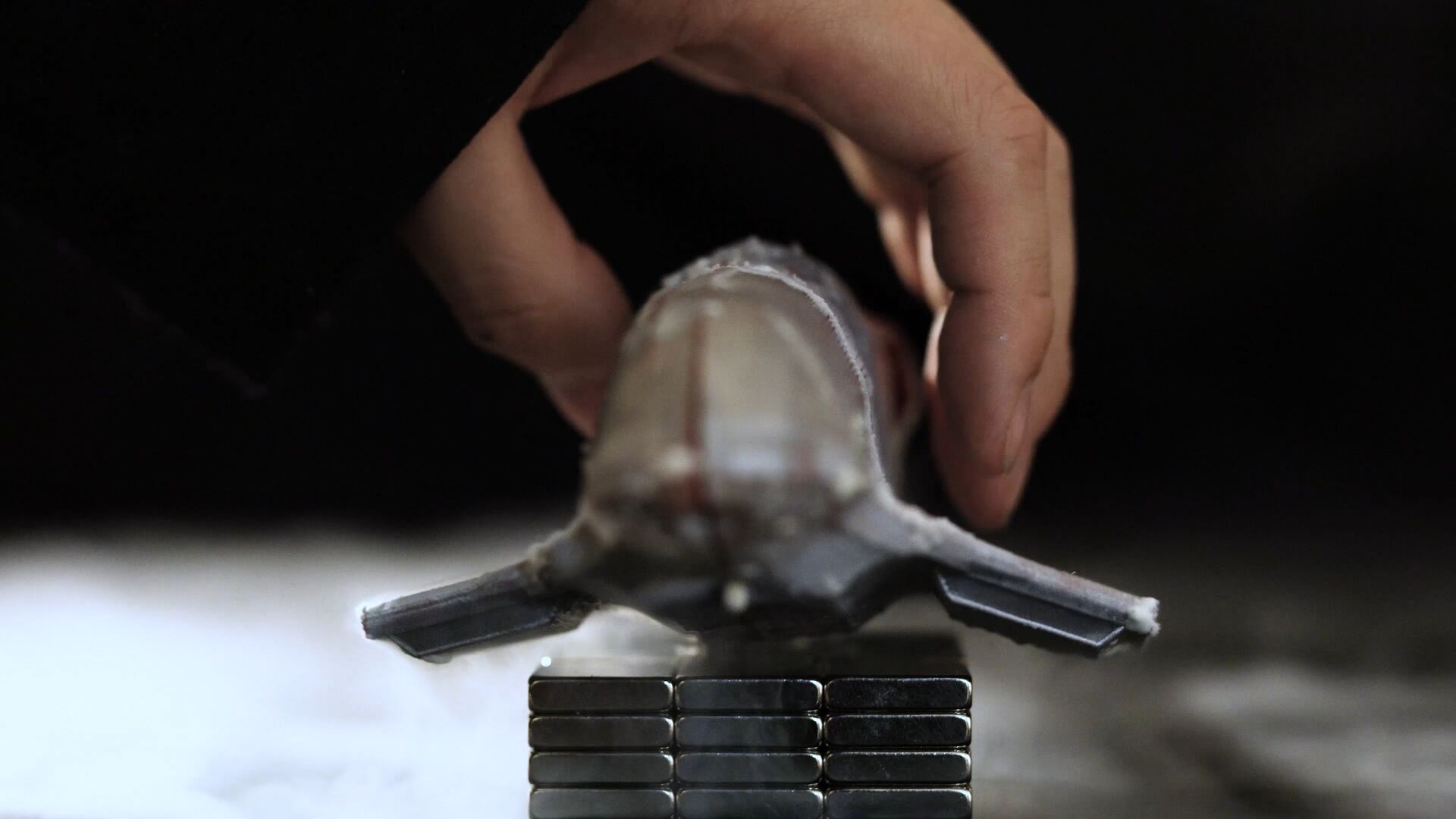LeviFab
Aerial manipulation of material objects is fascinating and is used in many performance situations. Many scientific demonstrations and magic shows employ these levitations. Acoustic, magnetic, electric, and superconductive levitation are used in many situations. Adding controllability and increasing the design space of these levitation methods are often studied for use in entertainment applications in graphics and HCI communities. In this study, we focus on superconductive levitation because it has not been well explored for entertainment applications. Superconductive levitation requires different elements compared to other methods of levitation. It requires low temperature for superconductive materials and to satisfy this condition, liquid nitrogen is often used. These superconductive levitation requirements impose various difficulties. Moreover, the demonstration of superconductive levitation shows levitation itself as “contents”. Thus, its levitated structure, manipulate path, and interactions have not been well considered for entertainment applications. We are strongly motivated to redesign the demonstration of superconductive levitation in a more fascinating way by computational fabrication and manipulation methods. Computational design methods of superconductive levitation have wide applications in not only entertainment but also other HCI context. Now superconductive levitation is limited levitation time because of the temperature limit of superconductive material however, 10 min levitation is enough to use in many HCI usages such as showing the demo of 3D manipulation, discussion with levitated physical icons, and discuss with 3D actuated characters. We need to solve several problems in both fabrication and manipulation to achieve the 3D printed object levitation and manipulation by ways of superconductive levitation.
Credits
Pixie Dust Technologies, Inc.
Pixie Dust Technologies, Inc.
Pixie Dust Technologies, Inc.
Related Materials
